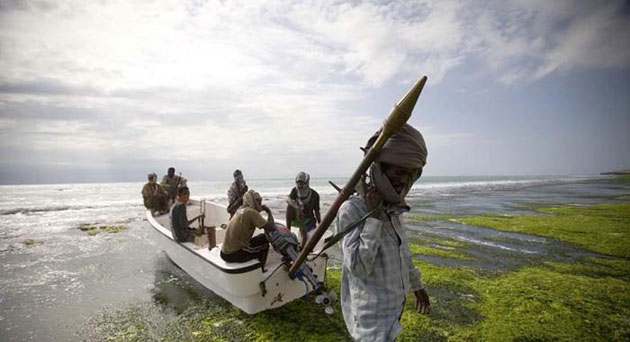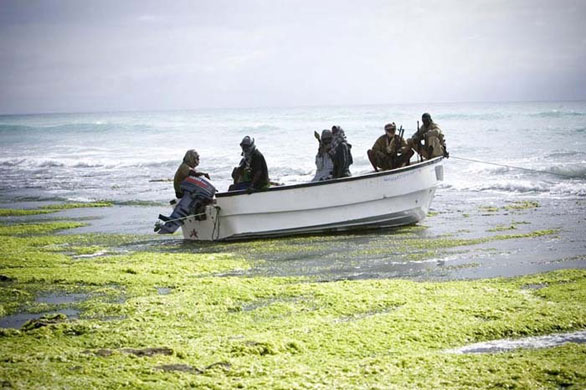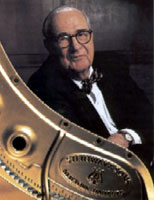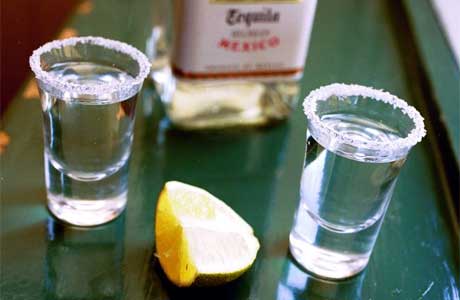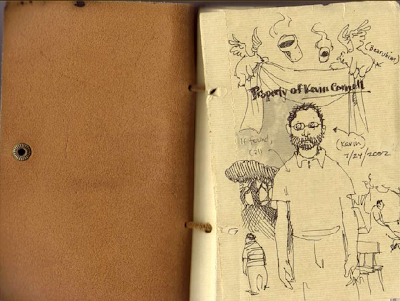“Testemunha de Acusação” e o olhar clássico hollywoodiano sobre seus personagenscondensado e adaptado de: Larissa Pontez, "O cinema do monóculo", 2008.podem ficar com a realidade
esse baixo astral
em que tudo entra pelo cano
eu quero viver de verdade
eu fico com o cinema americano
Paulo Leminski
Cinema Clássico. O próprio termo “clássico” já transmite uma idéia de fixo, imutável, emblemático de um tempo passado, mas que influencia e estabelece parâmetros para o que sucede, por tratar-se de algo universal e, assim, imortal, como as proporções gregas e as sinfonias de Mozart. Portanto, a nomenclatura de um tipo de cinema como clássico revela sua importância entre seus pares.
Outro ângulo pelo qual o termo é entendido é como algo preso às suas bases, conservador, resistente a mudanças e inovações. Mas o simples fato de o chamado Cinema Clássico Hollywoodiano tratar-se de um período tão abrangente (aproximadamente da década de 1910 aos anos 60), durante o qual ocorreram as duas Grandes Guerras, uma crise econômica mundial, a Guerra Fria, a Guerra do Vietnã, e inúmeras inovações tecnológicas, entre outras fundamentais transformações, torna ao mesmo tempo realistas e imprecisas as asserções de que esse cinema é tanto “imortal”, quanto profundamente arraigado às suas tradições: realistas, à medida que ele de fato definiu as linhas formais e estilísticas que perduram até hoje e que separam o “cinema canônico” de qualquer outro tipo de cinema que fuja a elas; e imprecisas, já que nenhuma forma de arte poderia permanecer imutável em um período tão dinâmico e turbulento.
Se o cinema canônico passou por poucas reformas nos seus alicerces formais, seu conteúdo sofreu, a cada transformação mundial, profundos conflitos. A “Era de Ouro” do cinema norte-americano, em que os grandes estúdios produziam com dinamismo industrial e os filmes de gênero atingiam seu ápice, durou, para alguns teóricos, aproximadamente até o final da Segunda Guerra Mundial. A discrepância, inédita até o final da década de 1940, entre os filmes elogiados pela crítica e emblemáticos da época – “À Beira do Abismo”, de Howard Hawks, 1946; “Sangue de Herói”, de John Ford; “A dama de Shanghai”, de Orson Welles, 1948, entre outros – e aqueles que, na ocasião, fizeram sucesso de bilheteria, é indicativa do gradual declínio do modelo hollywoodiano clássico. Essa fragmentação do público, que até os anos 40 era massificado incentivou a produção de filmes “pré-vendidos”, ou seja, baseados em livros, histórias, peças, etc., que já eram sucesso de vendas.
Bem-sucedido nesse momento de crise do sistema, Billy Wilder era um representante do modelo almejado pela indústria, geralmente fazendo filmes propositalmente sem conotações políticas, dirigidos às massas. Estilisticamente, é um dos diretores mais aclamados e representativos do formalismo técnico hollywoodiano. Apesar de defender ao máximo a chamada invisibilidade do aparato cinematográfico, em 1950 Wilder já era considerado um auteur dentro do sistema de estúdios, um autor que executava com maestria os princípios do cinema canônico.
Seu filme “Testemunha de Acusação” (1958) parece, a princípio, apenas mais uma adaptação, de uma peça surpreendente de Agatha Christie, apenas um filme onde o aprumo estilístico (da decupagem, da atuação, da direção de arte, etc.) fica evidente. Sob análise cuidadosa, entretanto, percebe-se uma reflexão sobre a capacidade de o cinema clássico espelhar, representar e se comunicar com o público desse período. Não apresenta inovações formais, como o cinema de vanguarda. Parte da própria gramática canônica, utilizando a gama de artifícios técnicos para investigar a eficácia do modelo narrativo clássico e seu iminente declínio.
A história trata de um caso de assassinato, em que a testemunha-chave – que testemunhará pela acusação – é a esposa do réu. No entanto, como na grande maioria dos clássicos hollywooodianos, o elemento central do filme são as ações e relações entre personagens, não sua dinâmica e seus conflitos psicológicos.
Em um período em que pouco era atribuído ao inconsciente das pessoas, Virginia Woolf ainda era considerada uma escritora "difícil" e Joyce, impossível, o cinema,que, com os anos, passou a ser visto por tantos teóricos como uma das formas de arte que mais agem dentro desse inconsciente, em seu modelo clássico, pouco falava do universo interior de seus personagens. Os filmes eram guiados pelas relações entre os indivíduos, deixando o espectador em uma posição não de observador onisciente, mas de alguém dentro da história, que acompanha e desvenda a narrativa pelas ações e palavras de seus personagens, cujas motivações não são divulgadas ou esclarecidas. Nesse sentido, o cinema clássico se aproximava muito mais da vida real, na qual cabe a cada um depreender as intenções alheias, do que da novela oitocentista, cujos narradores ofereciam uma exposição ilimitada das mentes de seus personagens.
Se “Testemunha de Acusação” fosse realizado hoje, o cinema e seu público exigiriam uma análise psicológica muito mais profunda e detalhista para uma história em que as verdadeiras intenções dos protagonistas (Christine e Vole) são completamente invertidas no final.
O filme abre com um travelling in, utilizado, como em tantos outros casos, para localizar e transpor o espectador para dentro do universo no qual transcorrerá a história: nesse caso, a Corte Criminal de Londres. Essa cena será repetida no terceiro ato, quando o júri se prepara para dar o veredicto.
A música inicial é um leitmotif que acompanha elementos representativos da justiça, como o brasão sobre a bancada do juiz no fim dos créditos iniciais. Porém, quando retorna, é sobre a imagem de uma estátua da Justiça em reforma, como uma metáfora kafkaniana de que o processo de justiça é o antagonista do filme, no qual tanto Vole quanto Wilfrid confiam. É a protagonista, Christine, que assumidamente desconfia e se opõe a esse sistema, burlando-o, tomando um caminho próprio e inesperado para salvar seu marido. E ao final do filme, quando a deficiência da justiça é comprovada, Wilfrid compreende que, ao executar – “não matar” – o marido, Christine está preenchendo a falha causada pelo sistema, reequilibrando a balança. Eles são, nessa cena, através de uma ainda mais sutil metáfora visual, cúmplices. O monóculo em que Wilfrid tanto confiava para determinar a honestidade das pessoas já lhe é obsoleto e ineficaz. Ele balança-o como um pêndulo, sem mirá-lo em ninguém. Porém, como um sinal para Christine, a luz que reflete na lente incide sobre a faca, anteriormente um instrumento na defesa do marido, com a qual ele será morto.
Vole e Christine são, até o desfecho do filme, quase caricaturas de si mesmos, mas integrados a um universo de personagens alegóricos (o herói vitimizado, a femme fatale, o sábio-bufão, a “ruffiana” enfermeira), e por isso são aceitos como familiares. Seus nomes variam quase a cada cena: Vole também é chamado de Leonard, Mr. Vole, o acusado, o prisioneiro; Christine é, além de Mrs. Vole, também Mrs. Helm, Frau Helm, e a própria testemunha de acusação. A volúvel identificação desses personagens sinaliza seus desdobramentos e transformações.
Christine, no entanto, é um caso ainda mais singular. Talvez tão importante quanto a linguagem canônica e o sistema de estúdios do período clássico seja o star system, que jamais voltou a ter o mesmo prestígio que teve na Era de Ouro. Sobre ele, David Bordwell escreve:
A estrela reforçava a tendência à caracterização fortemente definida e unificada. [...] como o personagem ficcional [a estrela] já possuía um conjunto de características salientes que preenchiam as necessidades da história.
Tendo como ponto de partida essa visão amalgamada de personagem-estrela, Herbert Feinstein não está sozinho quando, em 1958, referiu-se a Christine como a própria atriz:
Marlene Dietrich interpreta uma Testemunha de acusação traiçoeira e duas-caras. [...] parece inútil discutir esses personagens [...] sob nomes fictícios, já que – para uma mulher – essas femmes fatales conseguem, inexoravelmente, interpretarem a si mesmas.
Dos diversos arquétipos que revolviam as estrelas, a aura da femme fatale simbolizava a mulher sinônimo de ruína. Frígida, calculista e intocável, ela arquiteta a destruição dos homens que a vêem como objeto de desejo inatingível e, como a própria Christine alega, “veneram o chão onde ela pisa”. Como Mary Ann Doane comenta:
Seria um erro ver [a femme fatale] como uma heroína da modernidade. Ela não é sujeita do feminismo, mas um sintoma dos medos masculinos sobre o feminismo.
Em oposição a ela, as heroínas eram frágeis e puras. Essas características eram reforçadas pela fotografia, que lhe dava um aspecto angelical. Wilder utiliza esses cânones da técnica cinematográfica para apontar à verdadeira personalidade de Christine. Ao ser supostamente desmascarada por Wilfrid, ela chora no banco das testemunhas. É então que a luz que a ilumina, faz o mesmo efeito das heroínas do melodrama e do filme noir: Ela está se sacrificando pelo amado. Seguindo os arquétipos clássicos, em “Testemunha de Acusação” Dietrich seria não uma femme fatale, mas uma diva, uma mulher que desconhece seus efeitos acidentalmente destruidores.
Mas a mentalidade do star system estava tão arraigada nos espectadores do período que, mesmo após a traição de Vole e a validação das ações de Christine por Wilfrid, Feinstein ainda via Dietrich como a vilã.
Conhecendo plenamente as propriedades alegóricas e familiares que as estrelas produziam na platéia, Wilder utiliza o próprio star system para quebrar esses paradigmas, a fim de produzir o final surpreendente: o espectador antecipa que Christine trairá seu marido, mas ela será a verdadeira heroína trágica que luta para salvar seu amado sem, contudo, conquistar seu final feliz. Se Tyrone Power (Vole) é um dos “príncipes encantados” do cinema clássico, ele será o traidor assassino. A surpresa dessas inversões das identidades não só dos personagens, mas, para o público, dos próprios atores, só poderia ter tal impacto na Era do Cinema Clássico Hollywoodiano.
Como o espectador clássico, Sir Wilfrid também é abalado pela revelação dos protagonistas. A razão pela qual ele prezava tanto a vida do cliente era porque estava, desde o início, convicto de sua inocência, pois estava confiante nos métodos de avaliação e investigação que estava acostumado a usar. O público tenta encontrar sinais e desvendar os personagens através da lente cinematográfica, como Wilfrid através de seu monóculo, simplesmente baseado em suas convicções anteriores: o contrato entre cinema clássico e espectador de que, a qualquer momento do filme, o público teria sempre o ângulo verdadeiro do que está acontecendo; as características das estrelas se confundem e misturam com os personagens que interpretam, cujas ações e falas revelam suas reais motivações.
Mas o que a câmera de Wilder evidencia é a ineficácia e ingenuidade desse olhar. O filme acaba sendo uma metáfora das limitações do olhar clássico sobre os personagens, ao achar que, narrando suas ações, é possível apreender algo sobre suas verdadeiras identidades. Como na vida real, com pessoas reais, em que isso não é possível, também não é ‘realístico’ no cinema. A luz que o cinema clássico lança sobre seus personagens, como a luz que o advogado lançava com seu monóculo, é inútil. Ao invés de estar atento às falas e ações, o espectador, para realmente desvendar esses personagens, deve olhar além do que está acostumado a ver. Como o próprio Wilfrid desconfia, “isso é muito arrumado, muito arranjado, e inteiramente simétrico demais”.
O declínio do modelo clássico hollywoodiano não se deve exclusivamente a mudanças econômicas ou à crise do sistema de estúdios. As mudanças de mentalidade do público americano, que havia perdido um pouco de sua ingenuidade e tornado-se mais aberto e consciente às demais tendências mundiais, foram gradativamente afastando o espectador do contato que costumava ter com a forma como Hollywood contava suas histórias e retratava seu imaginário. Seus conflitos e alegrias já não eram mais aqueles representados nas telas.
O fim do período Clássico Hollywoodiano pode ser visto como o coroamento e desfecho do período industrial nos Estados Unidos. De “O Nascimento de uma Nação” (D. W. Griffith, 1915) a “Como era verde o meu vale” (John Ford, 1941), passando por “Tempos Modernos” (Charlie Chaplin, 1936), “I Love Lucy” e “Os Jetsons”, a produção audiovisual americana narrou e refletiu os desafios, sacrifícios, perplexidades, benefícios e alegrias da era industrial, da mesma forma como as perturbações provocadas pela transição da sociedade agrária para a sociedade urbano-industrial foi documentada em um trabalho pioneiro do cinema – Metrópolis (Fritz Lang, 1927).
À medida que foi ficando claro que essa sociedade havia se transformado em uma sociedade pós-industrial, ficou também claro que essa produção audiovisual pertencia a uma outra época, agora extinta. A fragmentação dos gostos, o aumento da renda da população e o barateamento dos meios de produção e distribuição caracterizam a sociedade pós-industrial, e propiciam uma produção muito mais variada, multi-cultural, experimental e auto-reflexiva.
